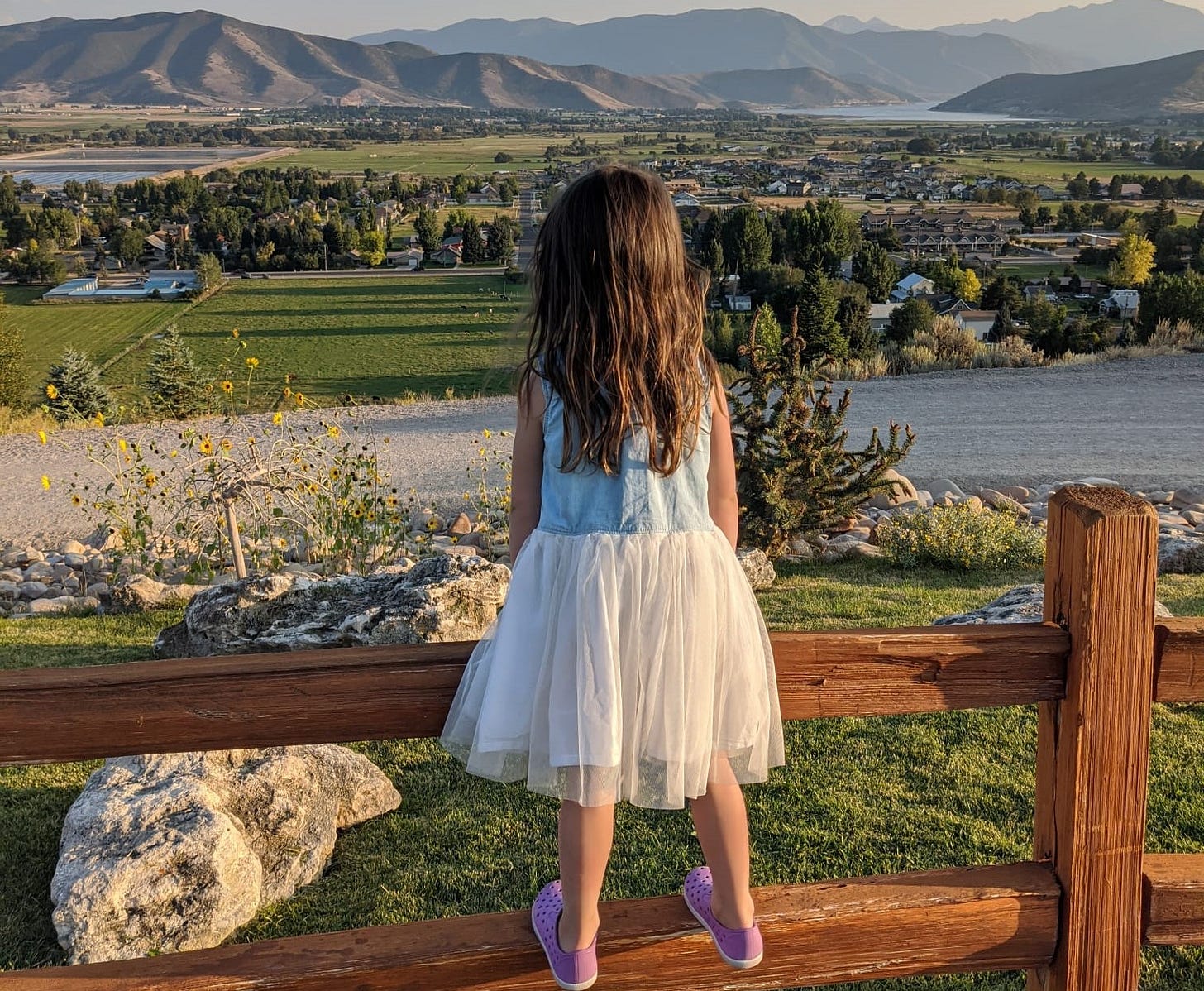On my phone, I keep a note of idiosyncratic words and phrases from my five-year-old’s evolving vernacular.
Yesterday evening to her is yesternight, and she once referred to the golden morning light splashed across my bedroom walls as sun dew.
Last summer, descending into Bryce Canyon for a hike, surrounded by red rock and desert landscape, she declared, “I’ve never been to a place that’s orange-only before!”
On a different vacation a while back, she asked me, “Why is there not many colors right now?” when she woke to grayish dawn in a dim hotel room.
Maybe it’s because I’m a writer, but I’m endlessly fascinated by this real-life study in language development.
The way she acquires new words and tries them repeatedly in various contexts; how, if she lacks the verbiage for a specific concept, she strings together words that she does know until she’s found a way to convey it.
And she does usually manage to convey it—often in a more striking, resonant way than if she had used the expected language.
Maybe we can learn something from this approach.
Maybe by reaching beyond persistent clichés, hollow idioms, and tired reproductions, we can render a more dynamic truth.
I once asked my daughter to name some of the fall colors on the trees out the car window. I expected her to rattle off red, yellow, orange—you know, the colors that we all tend to associate with autumn leaves. But she was three at the time and, I guess, unaware of these conventions.
She told me the trees were pink and purple.
I laughed, then I realized she was right. Among the warm wash of reds and yellows were tinges of deep merlot, vibrant fuchsia.

The term shoshin, or “beginner’s mind,” in Zen Buddhism refers to shedding your preconceived ideas and assumptions so that you can open yourself up to new learning and possibility.
According to Zen monk Shunryu Suzuki, “In the beginner’s mind there are many possibilities, but in the expert’s there are few.”1
When I asked my then-three-year-old what colors she saw among the fall leaves, she didn’t know that the acceptable answers were limited mostly to red, yellow, and orange. And because she lacked any preconceived notions about what to look for, she saw the colors I had missed.
In her poem “Some Feel Rain,”2 Joanna Klink wields fresh description that is unconstrained by convention or cliché—to potent effect:
Some feel rain. Some feel the beetle startle in its ghost-part when the bark slips. Some feel musk. Asleep against each other in the whiskey dark, scarcely there. When it falls apart, some feel the moondark air drop its motes to the patch-thick slopes of snow. Tiny blinkings of ice from the oak, a boot-beat that comes and goes, the line of prayer you can follow from the dusking wind to the snowy owl it carries. Some feel sunlight well up in blood-vessels below the skin and wish there had been less to lose.
So many new ways to see and think of old concepts. Whiskey dark; blinkings of ice; dusking wind.
Every one of those images veers away from how I expect it to be described. Yet each description is clear and precise. More effective, I would say, than if the writer had relied on more typical imagery (pitch black instead of whiskey dark, for example).
An exercise for you—
Take this poem (or another one you enjoy, or even a prose excerpt ripe with similarly fresh prose), and circle or highlight or otherwise note all the words and phrases that make your spine tingle.
Choose three or four favorites from that list of words and phrases. Then repurpose your chosen phrases in a piece of original writing.
Can you find new, unexpected ways to use some of the borrowed language? Can you describe something familiar in an unfamiliar manner?
Can you open yourself to greater possibility by seeing things like a child might?
As quoted in the Psyche article “How to foster ‘shoshin.’”
Read the full poem on The Poetry Foundation website.






